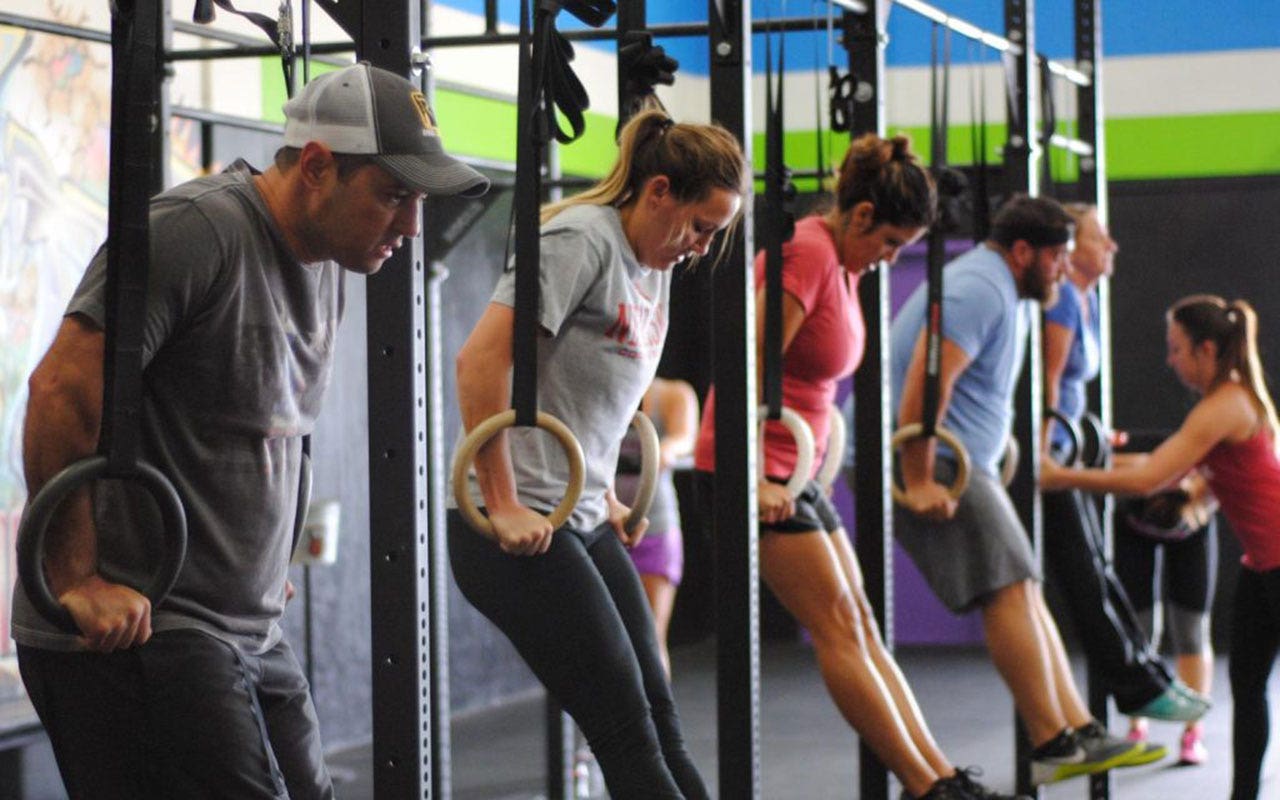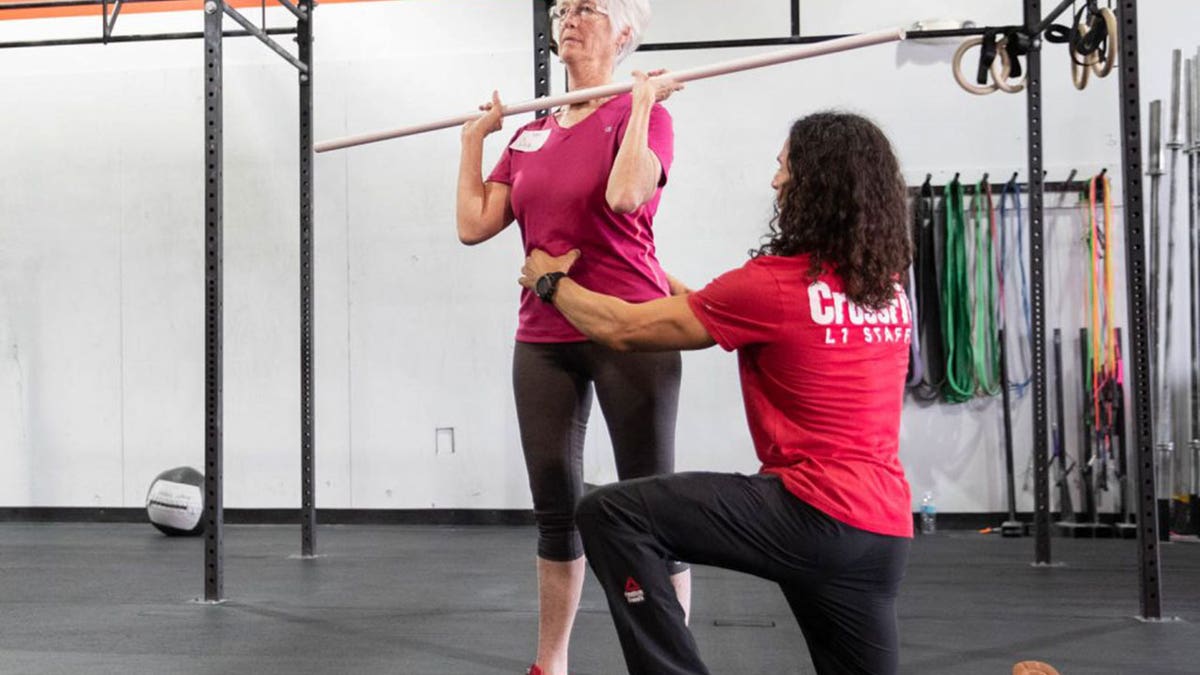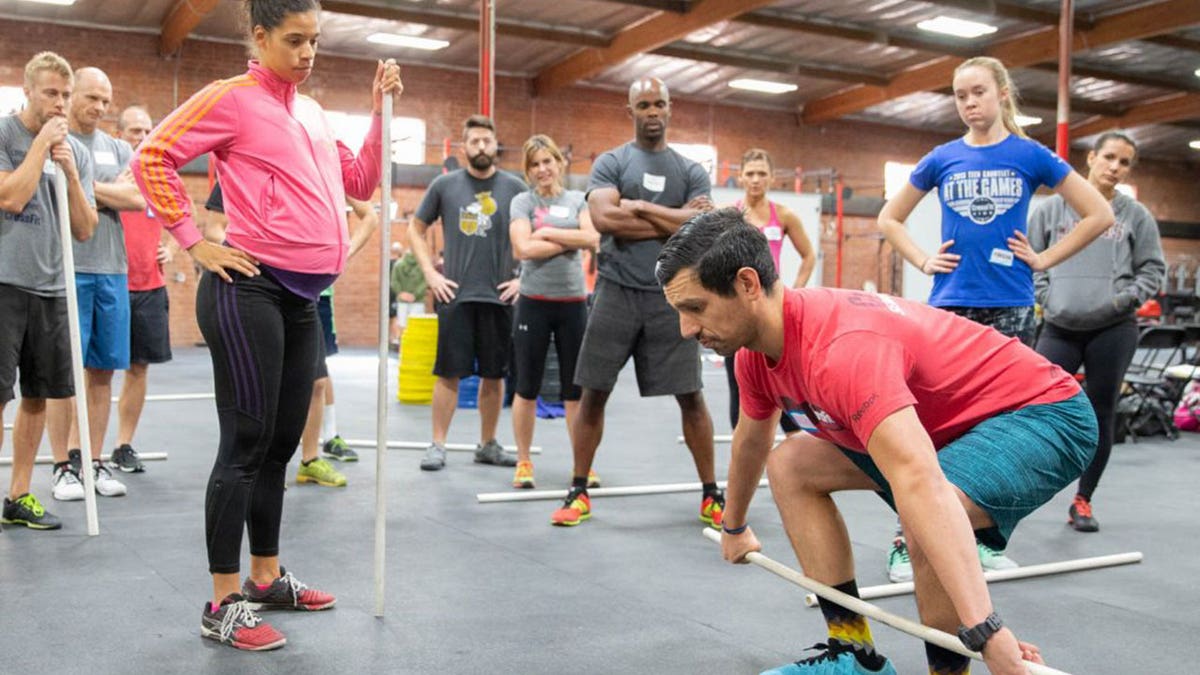Health
CrossFit for beginners: How to make the most of the fitness program

CrossFit offers a unique fitness experience, blending a combination of high-intensity workouts with a supportive community.
It’s important for beginners to equip themselves with the knowledge necessary to ensure a safe and successful start before diving into the program.
Read on to learn more about the program and how newcomers can make the most of their CrossFit journey.
What is CrossFit?
CrossFit is a results-oriented fitness program with a focus on lifestyle changes through training.
The program’s workouts feature constantly varied, high-intensity and functional movements.
6 ENERGY BOOSTERS TO HELP BEAT THE MIDDAY SLUMP, FROM A NUTRITION EXPERT
Founded more than 20 years ago in a garage gym in Santa Cruz, California, CrossFit has since become one of the world’s most popular training programs for improving health and fitness performance.
CrossFit aims to help its members excel in various physical activities and challenges both inside and outside the gym.
CrossFit is known for its high-intensity workouts that blend elements from weightlifting, gymnastics and cardio. (CrossFit, LLC)
How is CrossFit different from other fitness programs?
CrossFit is known for its workouts that blend elements from weightlifting, gymnastics and cardio.
The fitness company has more than 12,000 CrossFit affiliates spanning 146 countries, Austin Malleolo, senior director of strategy and operations of affiliates at CrossFit, told Fox News Digital.
“Our affiliates are staffed with trainers who are equipped to teach you how to move safely, effectively and efficiently,” Malleolo said.
The CrossFit program is based on three pillars: variance, functionality and intensity.
CROSSFIT HIRES FORMER US MARINE AND TECH EXECUTIVE AS ITS NEW CEO
Variance is the practice of regularly changing workout routines and exercises.
By incorporating a wide variety of movements, variance provides CrossFit members with a broader range of physical challenges. This approach exposes the body to different stimuli, which promotes continual growth and adaptation.
A CrossFit class is a one-hour group session led by a coach.
Functionality is doing exercises that mimic real-life activities. By building strength, flexibility, endurance and coordination through functional movements, members can better navigate daily activities outside the gym.
Intensity is the level of effort exerted during workouts. While the word may seem intimidating, it’s simply a guiding principle that symbolizes the importance of working hard to achieve tangible results.
What does a CrossFit class look like?
A CrossFit class is a one-hour group session led by a coach.
Typically, sessions begin with a whiteboard brief, where a coach outlines the workout flow, provides timing examples and demonstrates movements.
WE TRIED IT: CROSSFIT
Next, the coach discusses the goals of the workout, explaining the intended stimulus for members to understand the purpose behind the session. Scaling options are then provided for movements in the workout, allowing members to adjust based on their skill level.

CrossFit classes are designed to meet members at their current fitness levels and abilities. (CrossFit, LLC)
Physical activities begin with a general warm-up to get members moving and introduce movement patterns, followed by a specific warm-up tailored to the workout. The session’s main focus is devoted to the workout itself, where participants engage in the exercises outlined.
The session concludes with a cool-down, which incorporates stretching and mobility exercises to reduce muscle soreness. This approach allows members to receive a well-rounded workout experience.
How does CrossFit accommodate those with different fitness levels?
CrossFit classes are designed to meet members at their current fitness levels and abilities, Malleolo told Fox News Digital.
“Coaches start by tailoring the workout of the day to allow for all members in the class to achieve the intended goals of the workout that day by having a robust warm-up that allows the members to properly warm up and practice the movements that they will be doing in the workout,” Malleolo said. “The coach will adjust the loading, reps, and time of the workout based on the member’s needs to align with that day’s workout.”
DOES CROSSFIT REALLY WORK?
Throughout the class, coaches teach and refine movements, offering guidance to improve performance.
CrossFit promotes inclusivity and accessibility by accommodating those with a range of fitness levels, allowing participants to progress safely at their own pace.

Starting your fitness journey can feel overwhelming, but with the right support, it becomes a powerful step toward a healthier lifestyle. (CrossFit, LLC)
How do I start CrossFit?
Starting your fitness journey can feel overwhelming, but with the right support, it becomes a powerful step toward a healthier lifestyle.
“Trust that the hardest part is to walk through the front door of the gym,” Malleolo said. “Once you are there, you will be taken care of! No matter where you are in your fitness journey, a CrossFit Affiliate is designed to be a part of that journey, no matter where you are today.”
CLICK HERE TO SIGN UP FOR OUR HEALTH NEWSLETTER
You can begin the process by researching CrossFit locations near you and setting up an introductory session.
Many CrossFit facilities offer programs designed to teach newcomers the fundamental movements in a supportive environment, Malleolo told Fox News Digital.
The program can be challenging, but it should also be enjoyable as well.
Participants are encouraged to embrace the process, celebrate their achievements and cherish the friendships made within the CrossFit community.
For more Health articles, visit www.foxnews.com/health.

Health
Find Yourself Waking up Dizzy? This Is What Doctors Want Women Over 50 To Know

Sign Up
Create a free account to access exclusive content, play games, solve puzzles, test your pop-culture knowledge and receive special offers.
Already have an account? Login
Forgot your password?
Get back to the Sign In
Use left and right arrow keys to navigate between menu items.
Use escape to exit the menu.
Health
Pregnancy-related deaths back down to pre-pandemic levels, CDC data says

U.S. pregnancy-related deaths have fallen back to pre-pandemic levels, new government data suggests.
About 680 women died last year during pregnancy or shortly after childbirth, according to provisional CDC data. That’s down from 817 deaths in 2022 and 1,205 in 2021, when it was the highest level in more than 50 years.
COVID-19 seems to be the main explanation for the improvement, said Donna Hoyert, a Centers for Disease Control and Prevention maternal mortality researcher.
US BIRTHS SAW NOTABLE DECREASE IN 2023, MARKING END TO LATE PANDEMIC REBOUND, EXPERTS SAY
The coronavirus can be particularly dangerous to pregnant women. And, in the worst days of the pandemic, burned out physicians may have added to the risk by ignoring pregnant women’s worries, experts say.
Fewer death certificates are mentioning COVID-19 as a contributor to pregnancy-related deaths. The count was over 400 in 2021 but fewer than 10 last year, Hoyert said.
The agency on Thursday released a report detailing the final maternal mortality data for 2022. It also recently released provisional data for 2023. Those numbers are expected to change after further analysis — the final 2022 number was 11% higher than the provisional one. Still, 2023 is expected to end up down from 2022, Hoyert said.
A room in a Mississippi hospital maternity ward is seen on Oct. 11, 2012. In 2023, U.S. pregnancy-related deaths fell back to pre-pandemic levels, according to data released by the Centers for Disease Control and Prevention on May 2, 2024. (AP Photo/Rogelio V. Solis, File)
The CDC counts women who die while pregnant, during childbirth and up to 42 days after birth from conditions considered related to pregnancy. Excessive bleeding, blood vessel blockages and infections are leading causes.
There were about 19 maternal deaths for every 100,000 live births in 2023, according to the provisional data. That’s in line with rates seen in 2018 and 2019.
But racial disparities remain: The death rate in Black moms is more than two-and-a-half times higher than that of white and Hispanic mothers.
“In the last five years we’ve really not improved on lowering the maternal death rate in our country, so there’s still a lot of work to do,” said Ashley Stoneburner, the March of Dimes’ director of applied research and analytics.
The advocacy organization this week kicked off an education campaign to get more pregnant women to consider taking low-dose aspirin if they are at risk of preeclempsia — a high blood pressure disorder that can harm both the mother and baby.
There are other efforts that may be helping to lower deaths and lingering health problems related to pregnancy, including stepped-up efforts to fight infections and address blood loss, said Dr. Laura Riley, a New York City-based obstetrician who handles high-risk pregnancies.
But there’s a risk that those kinds of improvements are being offset by a number of factors that may reduce the ability of women to get medical care before, during and after a birth, she said. Experts say the list includes the closure of rural hospitals and a 2022 U.S. Supreme Court decision that did away with the federally established right to abortion — and contributed to physician burnout by causing doctors to feel constrained about providing care during pregnancy-related medical emergencies.
“I think there’s good news. We’re making strides in certain areas,” said Riley, head OB-GYN at Weill Cornell Medicine. “But the bad news and scary news is … there are these other political and social forces that make this (reducing maternal deaths) difficult.”
Health
Eating one type of fruit regularly could reduce diabetes risk in women, study suggests: 'Incredibly healthy'

Eating avocados could be helpful when it comes to avoiding diabetes.
A new study published in the Journal of the Academy of Nutrition and Dietetics identified a link between eating avocados and reduced diabetes risk in some Mexican adults.
Researchers studied the dietary habits and diabetes diagnosis data from the Mexican National Survey of Health and Nutrition in the years 2012, 2016 and 2018.
BROWN SEAWEED CONSUMPTION COULD HELP MANAGE AND PREVENT TYPE 2 DIABETES, STUDY SHOWS
Of the 25,640 qualified respondents aged 20 and older, approximately 59% were female and more than 60% had abdominal obesity.
About 45% of participants reported eating avocados daily — 34.7 grams on average for men, and 29.8 grams for women.
Avocado eaters of both genders have an overall more nutritious diet, according to Medical News Today. (iStock)
“Among women, this study showed that compared to avocado non-consumers, avocado consumers had more than 20% lower odds of diabetes even after adjusting for various factors such as age, education level, body weight, physical activity and more,” said study author Feon Cheng, PhD, a nutrition epidemiologist at the Avocado Nutrition Center in Mission Viejo, California, in a statement to Fox News Digital.
(Cheng noted that her affiliation with the Avocado Nutrition Center did not influence the research methods or analysis.)
TYPE 2 DIABETES A MUCH GREATER RISK FOR ‘NIGHT OWLS’ THAN FOR EARLY BIRDS, A ‘STARTLING’ NEW STUDY FINDS
“This research is especially important considering that Hispanic adults are more likely to develop diabetes in their lifetime than U.S. adults overall and at a younger age,” Cheng said.
The same diabetes-reducing effects were not observed in men.
“It is interesting that there were differences between men and women, which may be attributed to different lifestyle factors,” Cheng noted.

Diabetes-reducing effects were observed in female study participants — but the same benefits were not found in men, per this research. (iStock )
“Although we did not compare lifestyle factors in this study, it warrants future research to explore whether they may help explain the difference seen between men and women.”
They also noted that avocados contain “numerous vitamins, minerals and phytochemicals, which can contribute to reducing the risk of metabolic syndrome and diabetes.”
SPINACH VS. KALE: WHICH IS ‘BETTER’ FOR YOU? NUTRITIONISTS SETTLE THE GREAT DEBATE
Tanya Freirich, a registered dietitian nutritionist in Charlotte, North Carolina, was not involved in the study, but told Fox News Digital that avocados are “an incredibly healthy food choice.”
The fruit is “full of omega-3 fats, low in carbohydrates, and high in fiber, magnesium, potassium and vitamins C, E and K,” the nutritionist pointed out.

Diabetes is the second leading cause of death in Mexico, according to the National Institute of Health. (iStock)
Consuming avocados, however, will not completely negate unhealthy food and lifestyle choices, Freirich said.
“While it makes sense that this low glycemic index and nutritious food could be associated with a reduced risk of diabetes, I recommend that people also take into consideration the rest of their diet,” she advised.
YOUR DIABETES RISK MAY DOUBLE IF YOU EAT THIS FOOD TWICE A WEEK, SAYS HARVARD RESEARCHERS
“To reduce your diabetes risk even further, in addition to adding avocados as part of your overall healthy eating pattern, also work on reducing added sugars, choosing high-fiber whole grains and consuming plenty of vegetables.”

People should adhere to a well-balanced diet to reduce diabetes risk, a nutritionist advised. (iStock)
Michelle Routhenstein, a New York-based preventive cardiology dietitian at EntirelyNourished.com, seconded the notion that avocados alone will not help lower diabetes risk. (She was not involved in the study.)
“We need to assess the whole diet, balance of meals and snacks, timing of eating, and other lifestyle factors like stress management, sleep quality and physical activity,” she told Fox News Digital.
MAKE IT: TOM BRADY’S FAVORITE AVOCADO ICE CREAM
New Jersey-based registered dietitian Erin Palinski-Wade, a consultant for the HASS Avocado Board, shared with Fox News Digital that she is “not surprised” at the new study’s conclusions about reduced diabetes risk and consumption of fresh avocado.
“Unlike most other fruits, avocados contain zero grams of naturally occurring sugar per serving and do not affect the glycemic response,” she said.

Avocados are a source of “good fats, fiber and a variety of vitamins and minerals,” according to a nutritionist. (iStock)
“A serving of avocado (one-third of a medium avocado or 50 grams) also provides a good source of fiber, which helps manage blood sugar levels,” Palinski-Wade added.
Previous research has shown that adding avocados to a meal could offer a “variety of benefits, such as lower post-meal glucose levels and improved satiety,” the nutritionist told Fox News Digital.
Consuming avocados will not completely negate unhealthy food and lifestyle choices, experts warned.
Scientists in a clinical trial supported by the Avocado Nutrition Center found that including a half or whole avocado at breakfast “decreased the participants’ glucose and insulin,” according to Palinski-Wade.
“That shows how adding avocado to a meal may support blood sugar management,” she noted.
“The body of evidence on avocados and diabetes is encouraging, and this new study adds to the evidence supporting avocados’ role in diabetes care and prevention.”
CLICK HERE TO SIGN UP FOR OUR HEALTH NEWSLETTER
Although the findings are positive, Palinski-Wade emphasized that the research has its limitations, as it does not generalize the results for all people.
“More research is still needed in certain areas,” she said.

Scientists in a clinical trial supported by the Avocado Nutrition Center found that including a half or whole avocado at breakfast decreased glucose and insulin. (iStock)
“Avocados can be a great way to add more variety to your plate while increasing your intake of good fats, fiber and a variety of vitamins and minerals, all nutrients that help to reduce the risk of chronic illness, including type 2 diabetes.”
The study did have some limitations, the researchers noted.
“Although the food-frequency questionnaire is validated and used to assess how often study participants consumed avocados in the past seven days, self-reported avocado consumption may overestimate or underestimate actual intake,” Cheng told Fox News Digital.
“Additionally, the cross-sectional nature of the study cannot establish causation.”
For more Health articles, visit foxnews.com/health
-

 News1 week ago
News1 week agoFirst cargo ship passes through new channel since Baltimore bridge collapse
-

 World1 week ago
World1 week agoHaiti Prime Minister Ariel Henry resigns, transitional council takes power
-

 Movie Reviews1 week ago
Movie Reviews1 week agoAbigail Movie Review: When pirouettes turn perilous
-

 World1 week ago
World1 week agoEU Parliament leaders recall term's highs and lows at last sitting
-

 Politics1 week ago
Politics1 week ago911 call transcript details Democratic Minnesota state senator’s alleged burglary at stepmother's home
-

 Politics1 week ago
Politics1 week agoGOP lawmakers demand major donors pull funding from Columbia over 'antisemitic incidents'
-

 Science1 week ago
Science1 week agoOpinion: America's 'big glass' dominance hangs on the fate of two powerful new telescopes
-

 World1 week ago
World1 week agoHamas ‘serious’ about captives’ release but not without Gaza ceasefire















